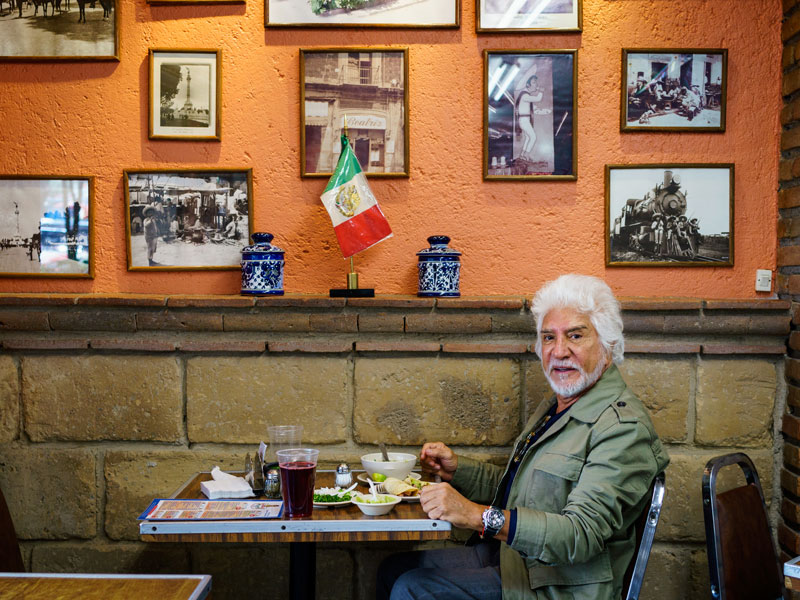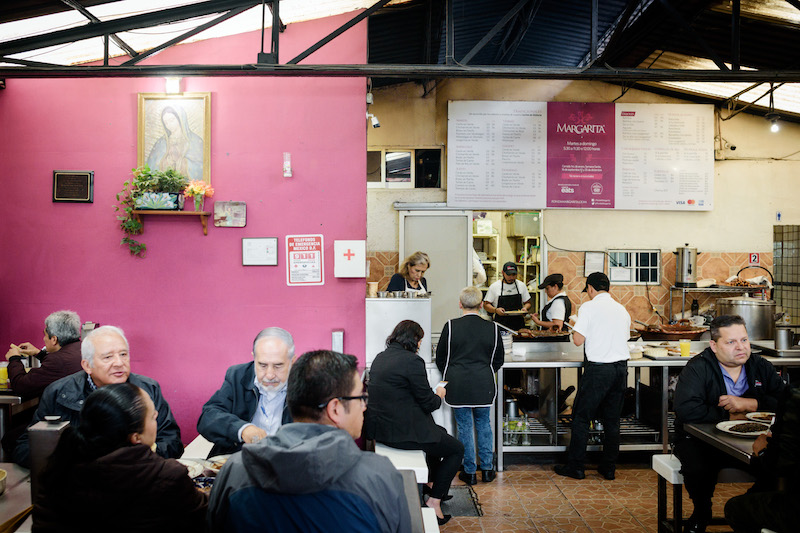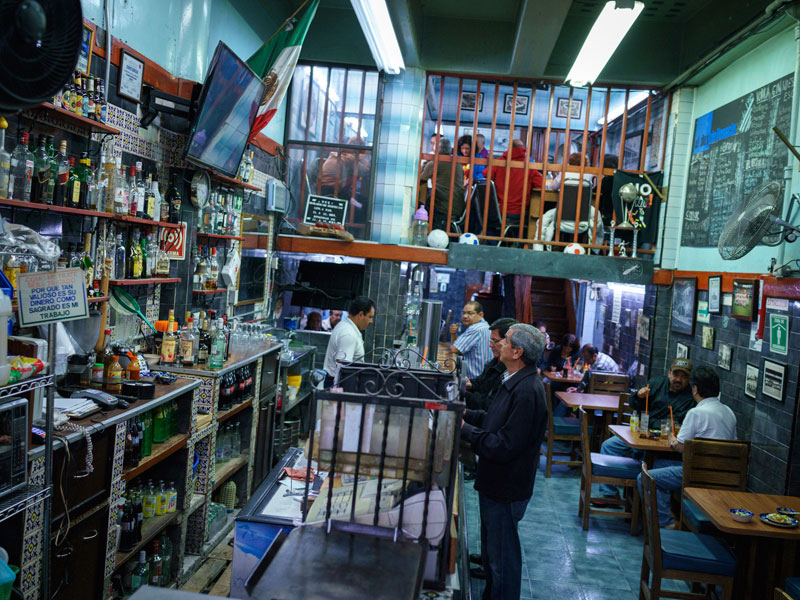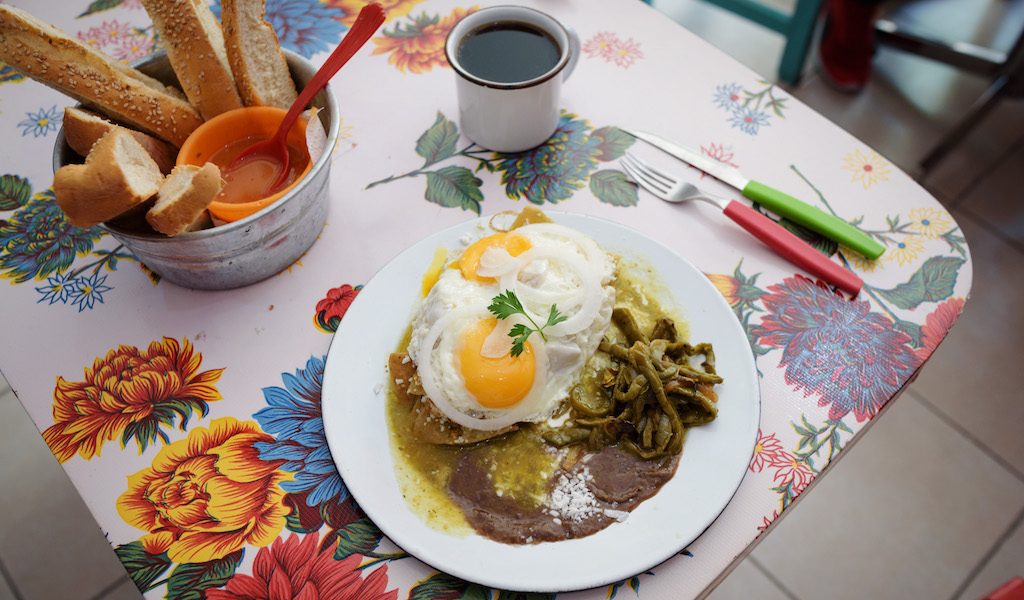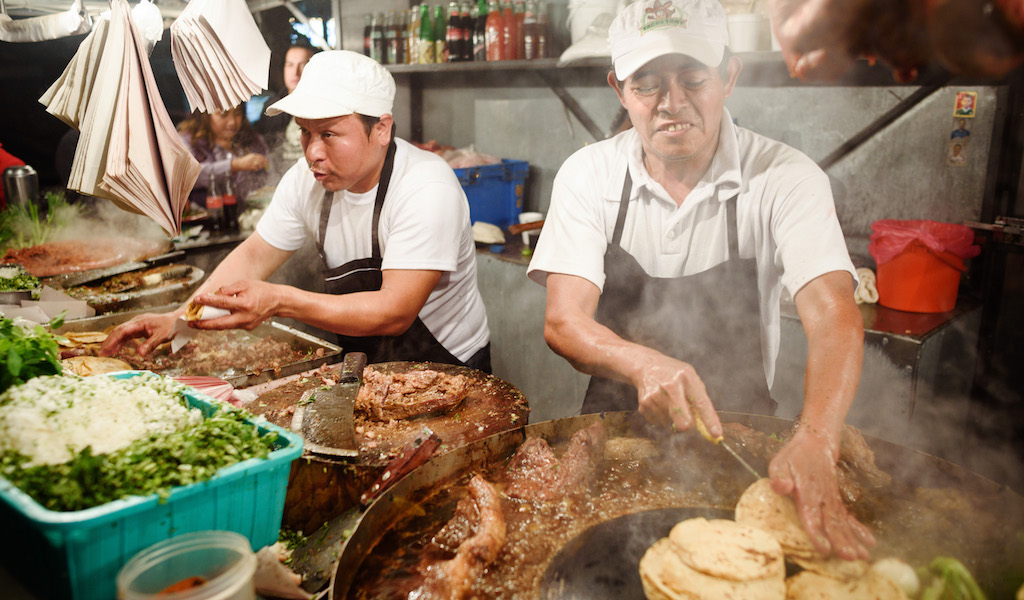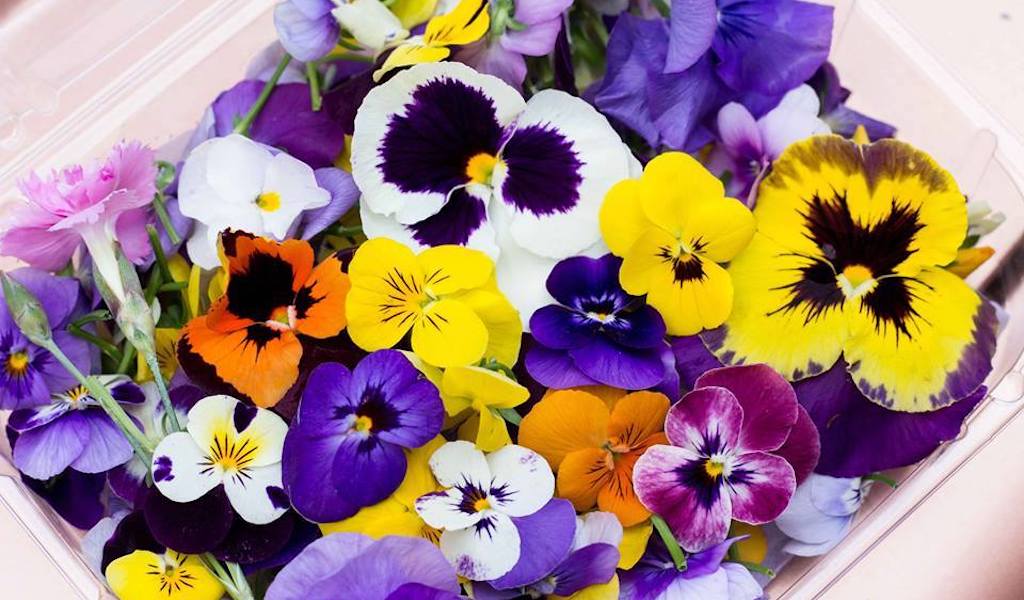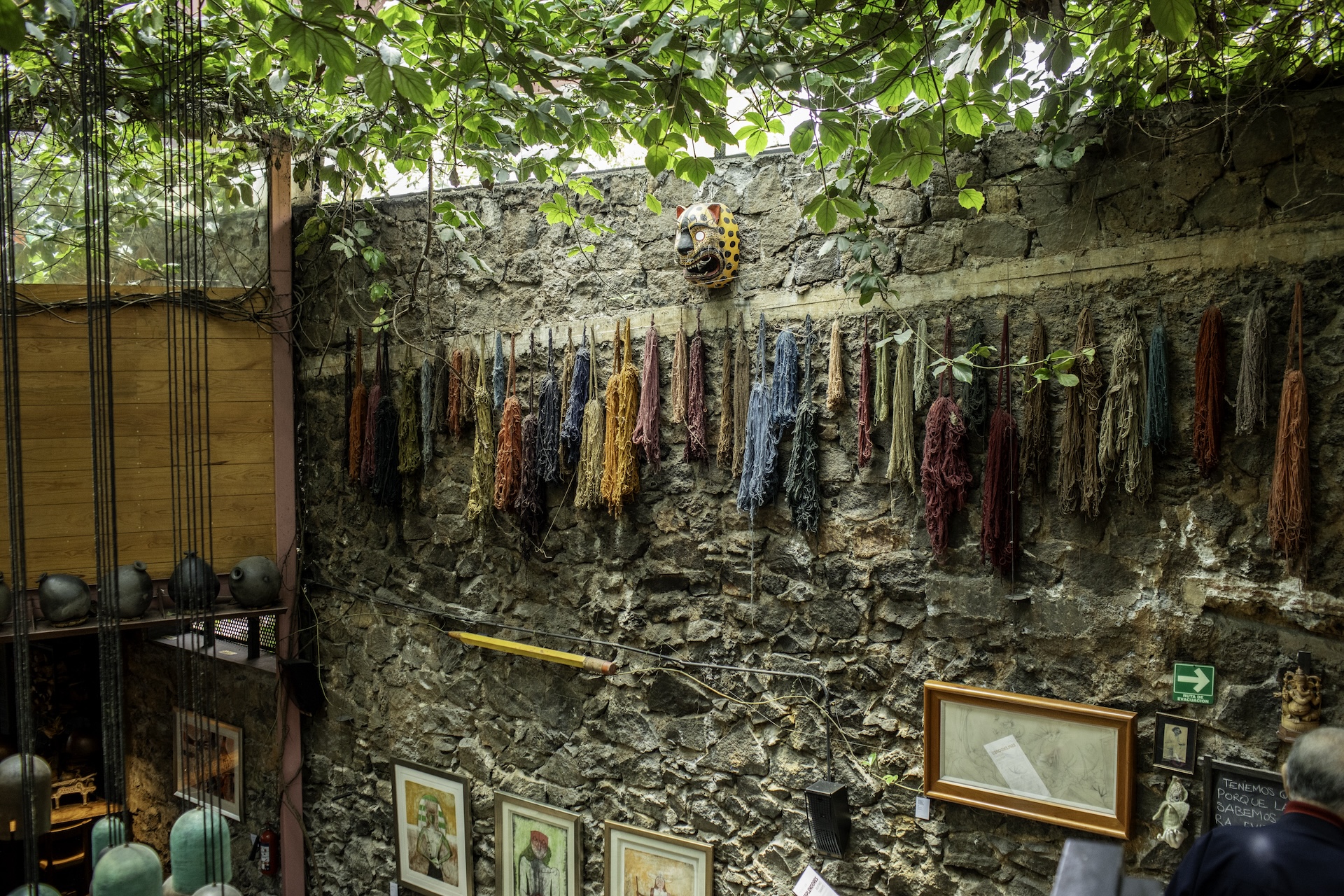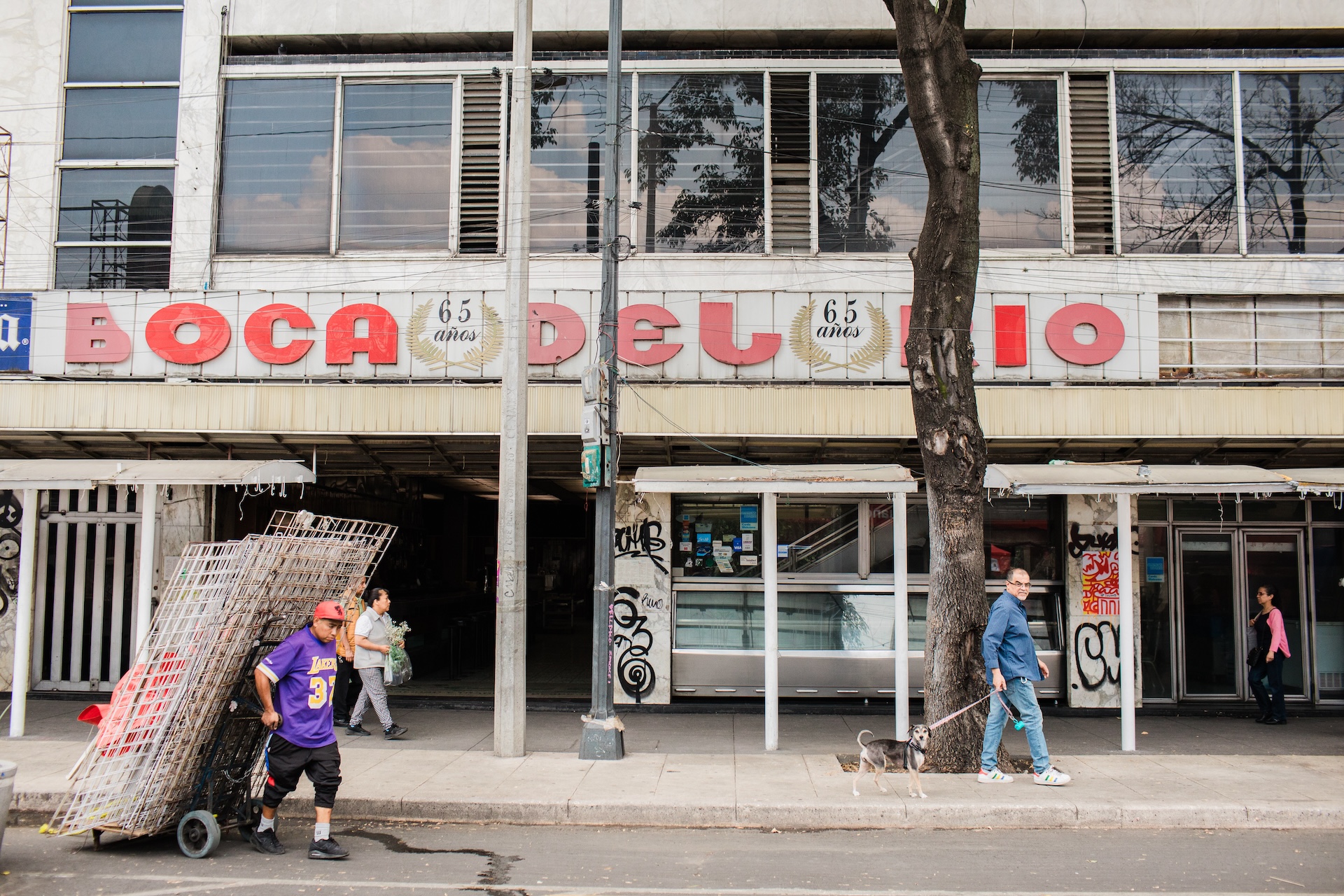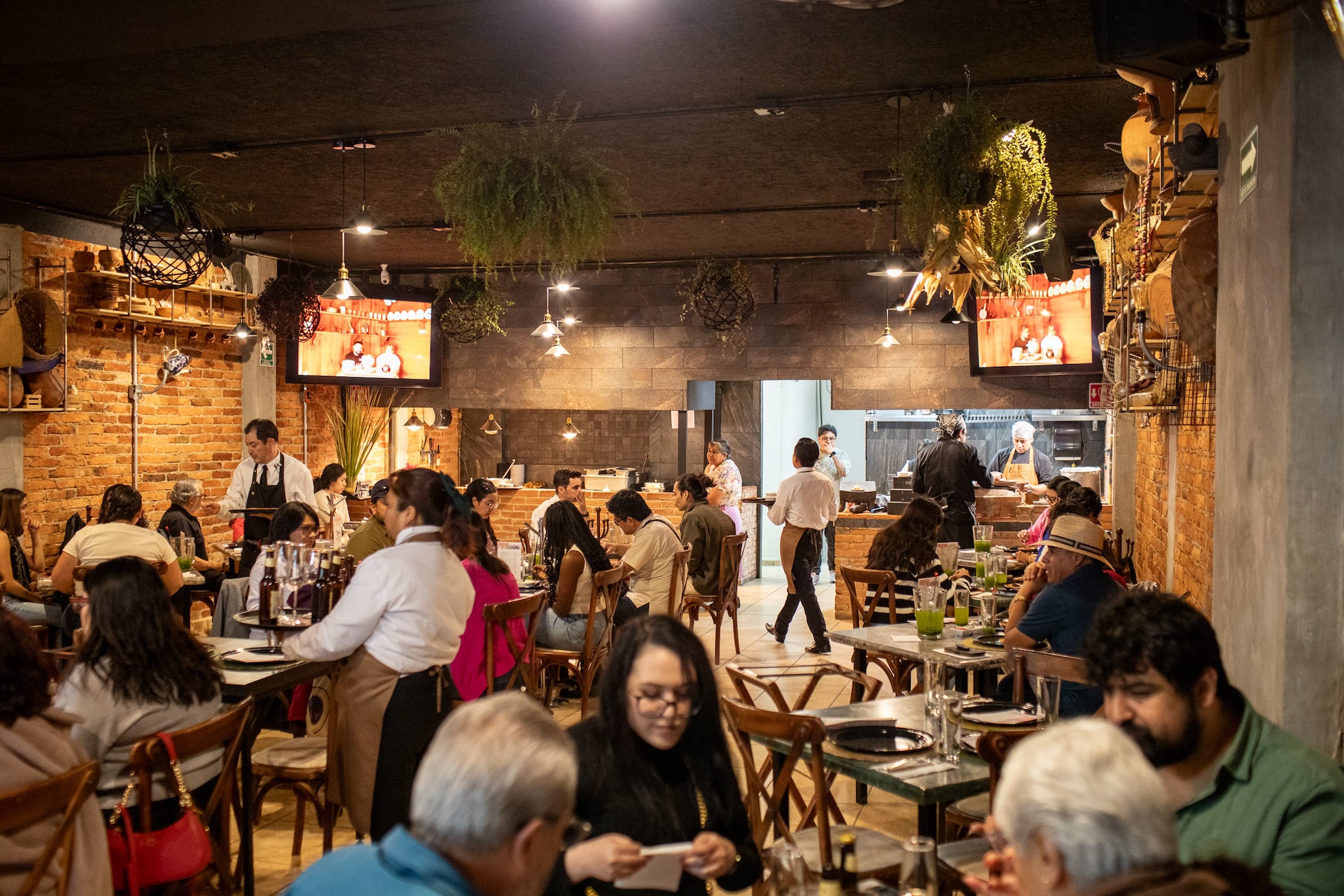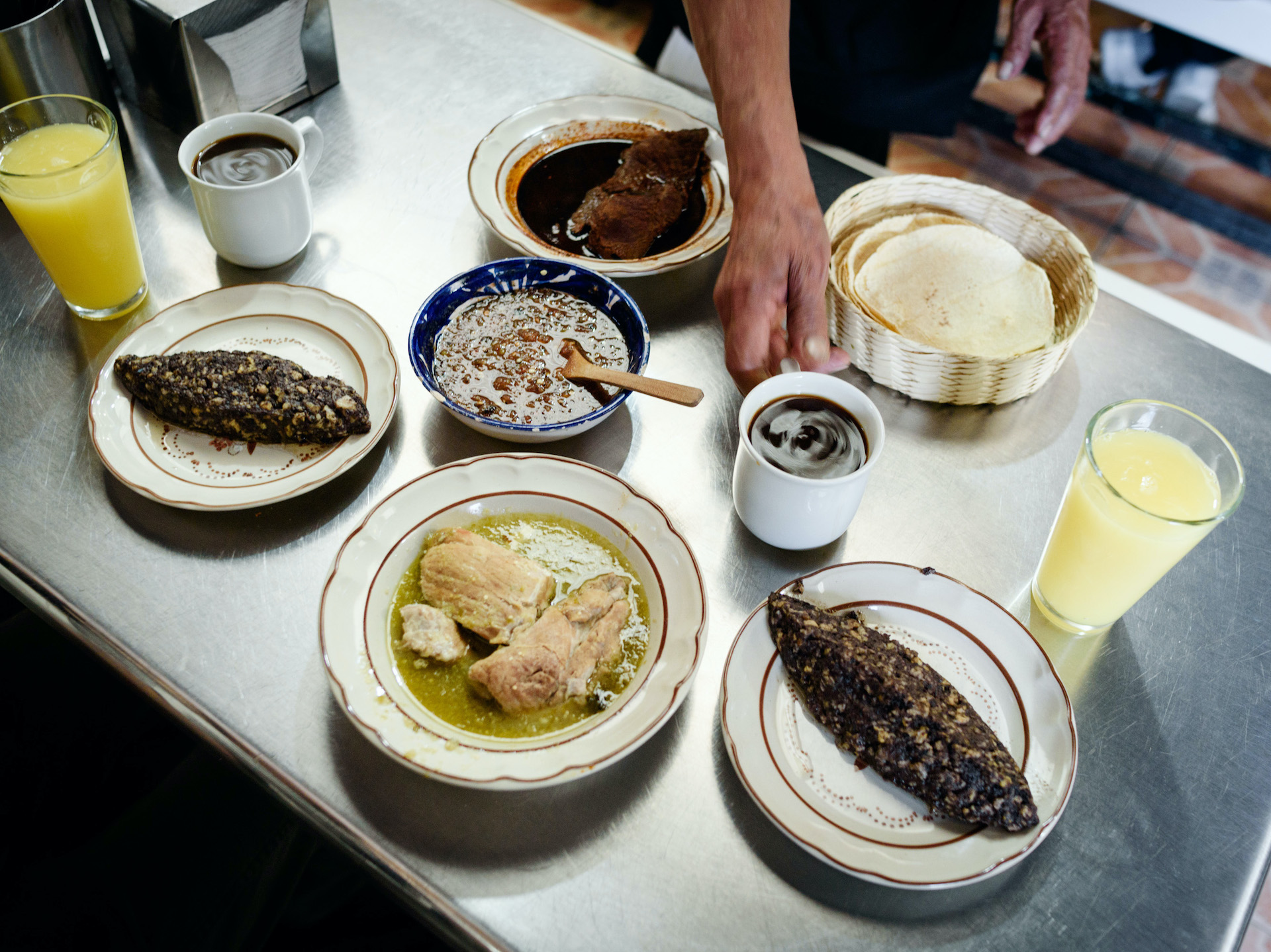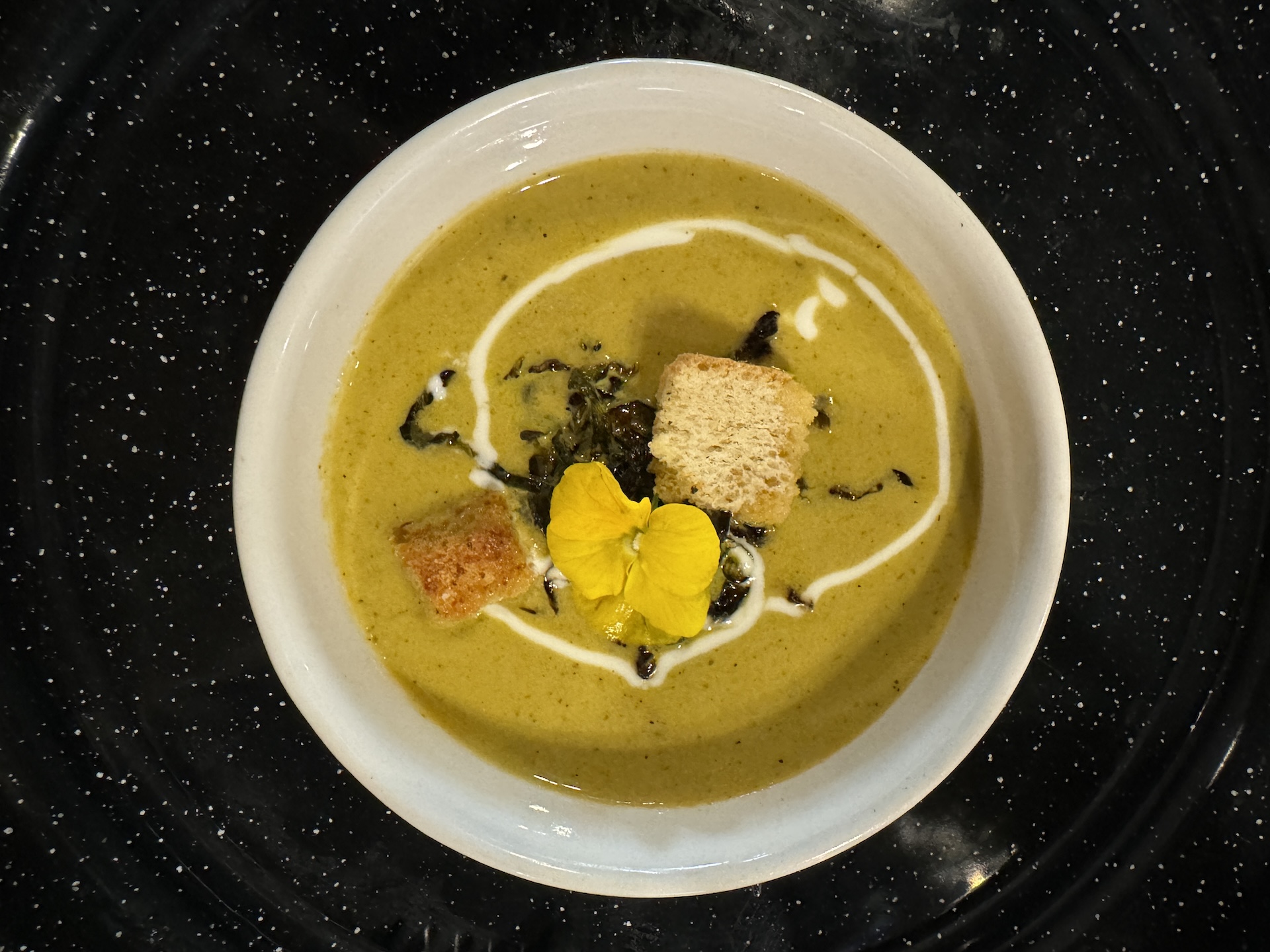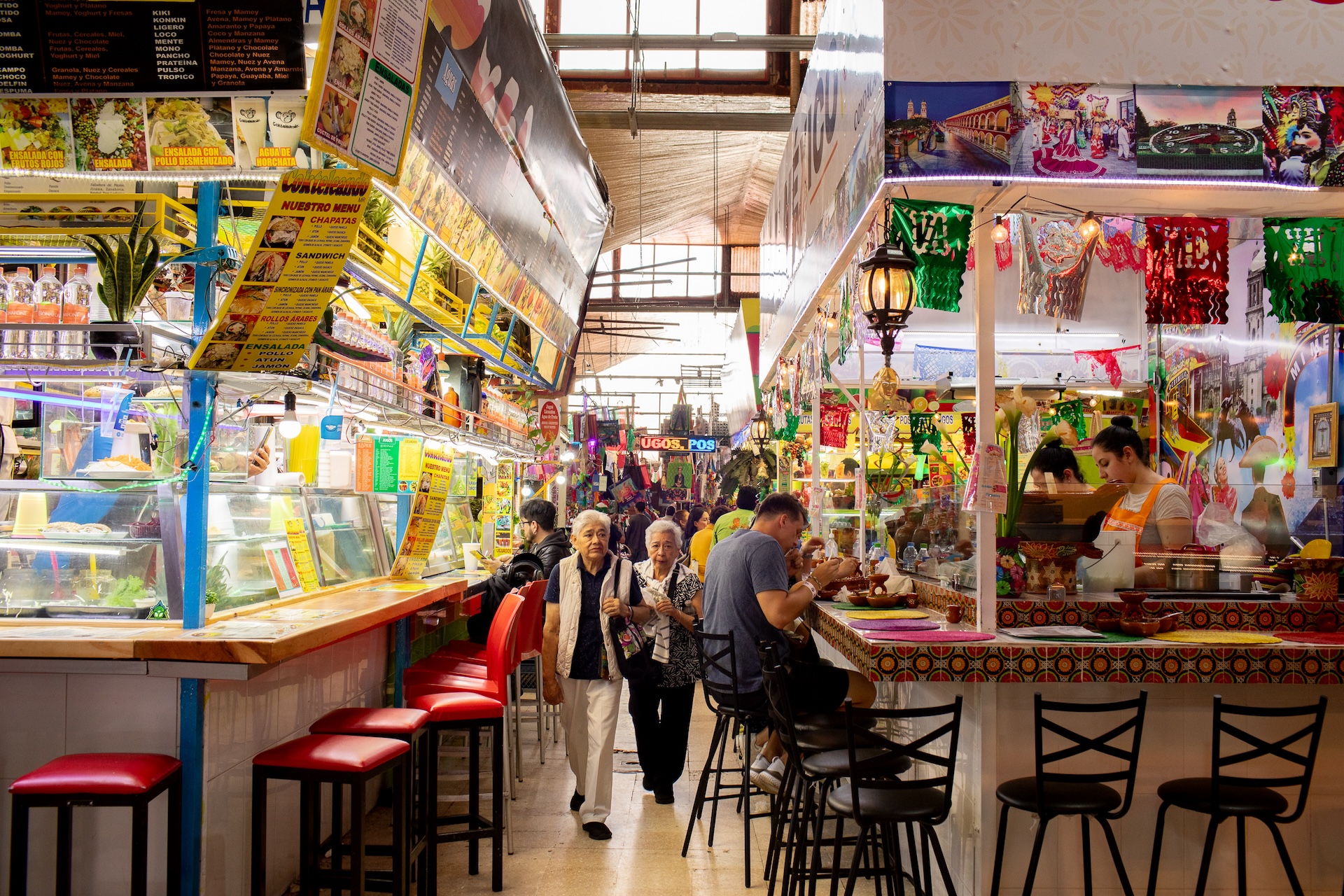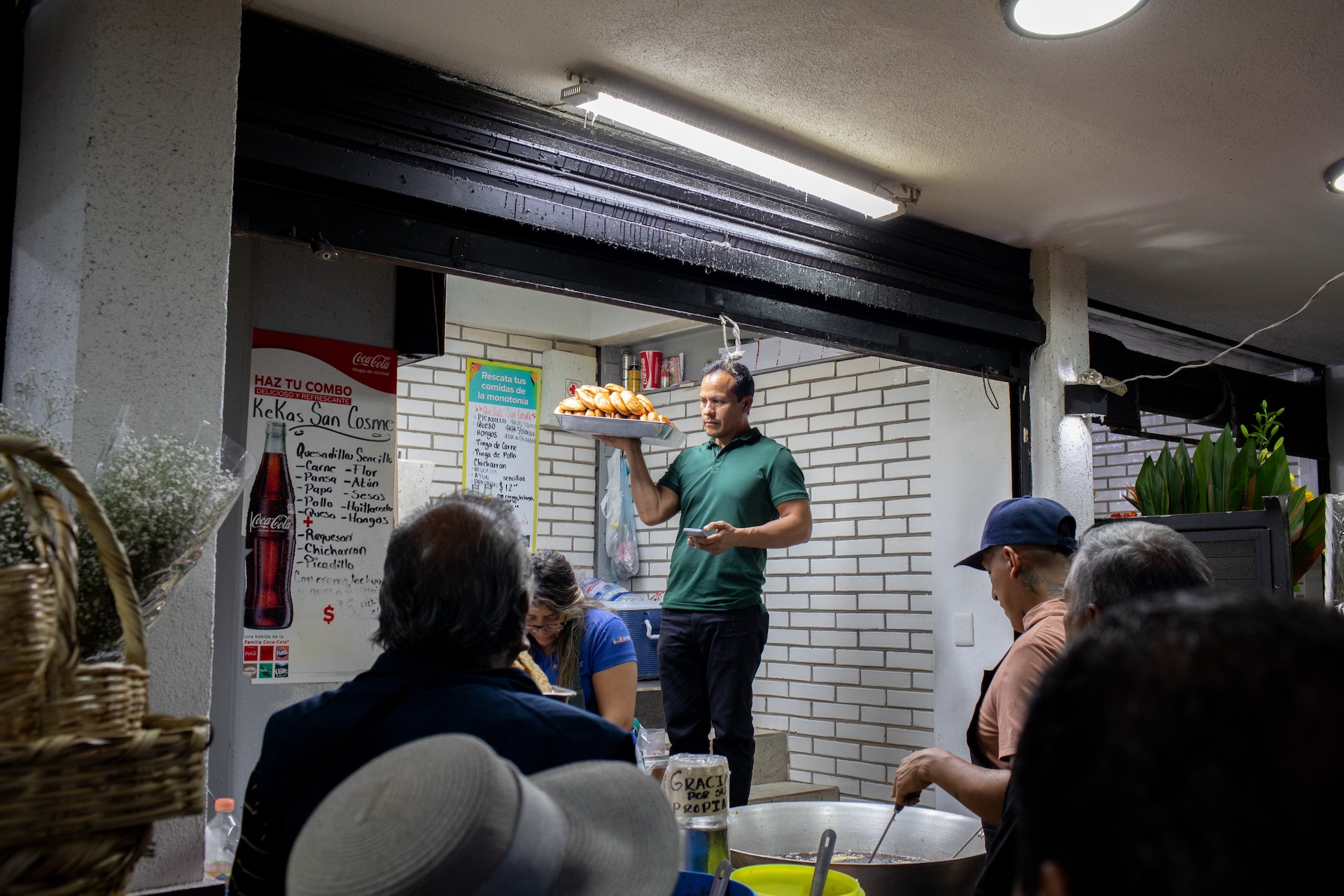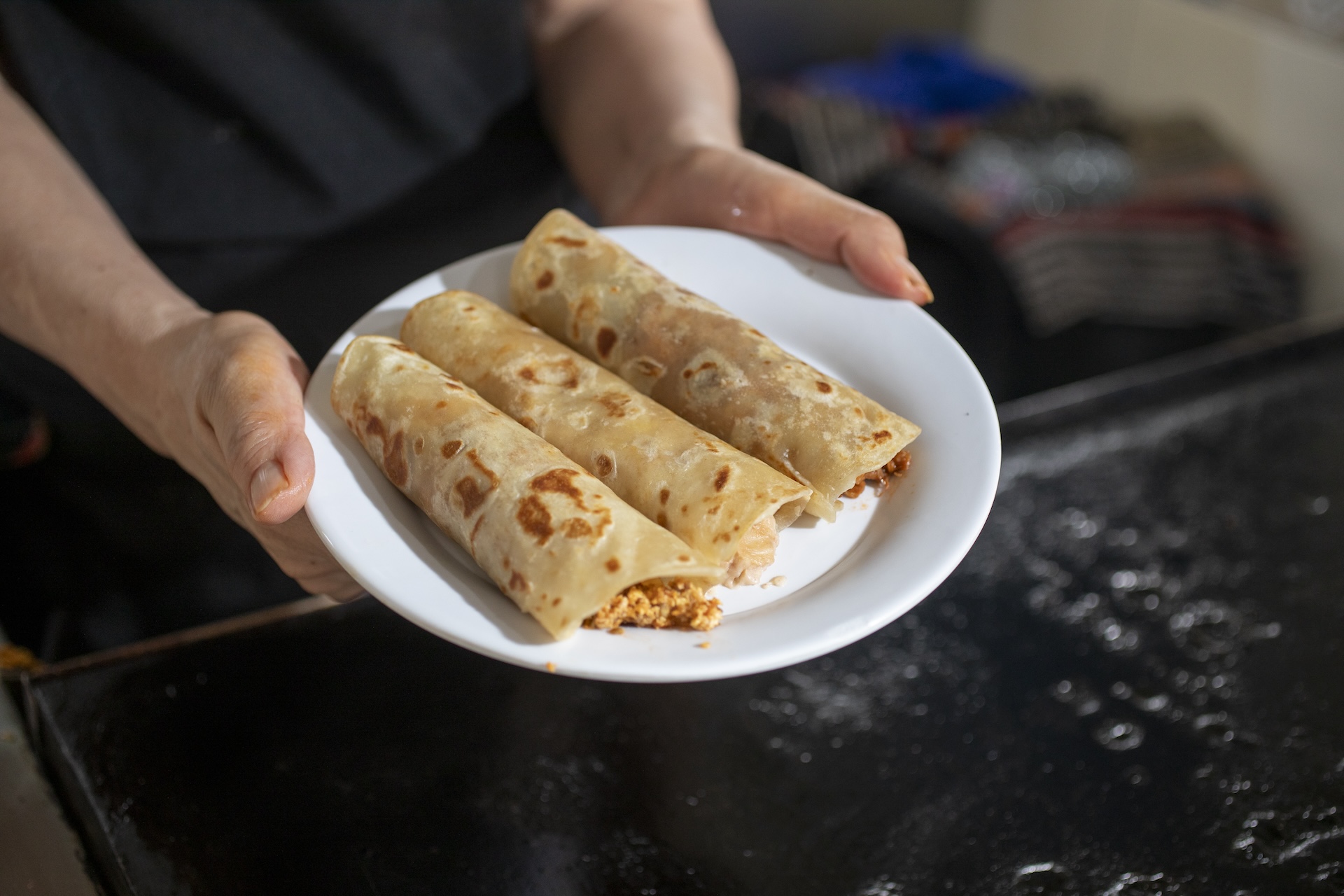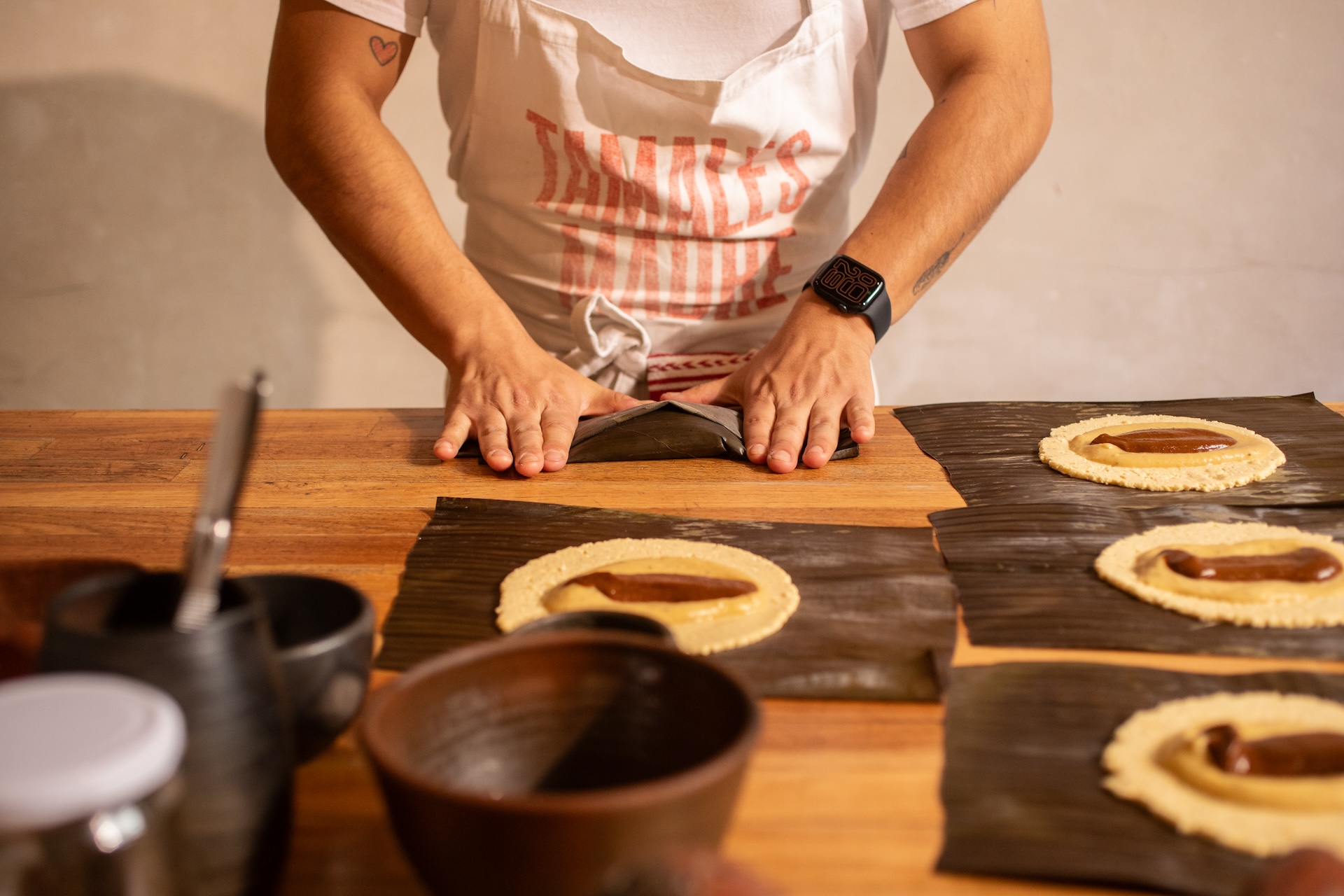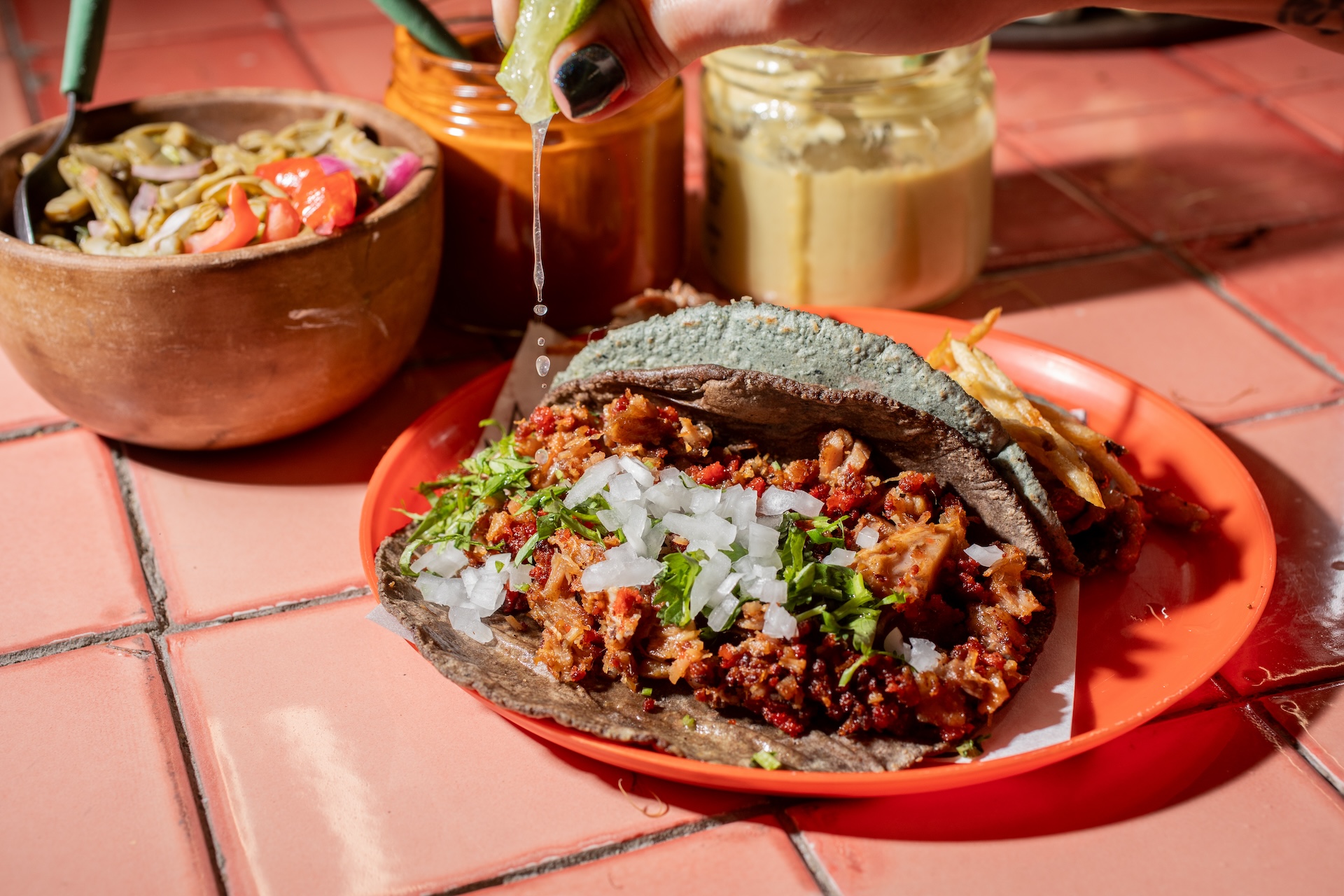We can't find the internet
Attempting to reconnect
Something went wrong!
Hang in there while we get back on track

Mexico City
Mexico City's culinary record
Mexico City’s culinary identity is certainly changing, thanks in large part to the boom in tourism. Yet this is only the most recent factor to shape how Mexico City is eating; shifting demographics, urbanization, property development, international economic policies and the ebb and flow of crime in the city have all molded a dining scene that is, on the one hand, catering to foreign tastes while, on the other, elevating traditional Mexican cooking techniques and dishes that were considered old-fashioned. Like Mexico City itself, the Mexican capital’s food scene is caught between several opposing forces: convenience versus slow cooking, home-grown versus imported, tradition versus innovation.
Get the Full Story →Tour Mexico City with Culinary Backstreets®
Upcoming Mexico City Food Tours
discover the city, street by street, bite by bite
Explore Mexico City
Mexico City
Beatricita: Taco Centenarian
In a town that runs on tacos, tacos de guisado may be the most ubiquitous version of the iconic dish in Mexico City. They can be found almost anywhere in the city, from specialty restaurants to markets, tianguis and street vendors selling them at stalls or even out of the trunk of a car. It may be an obvious point, but what distinguishes some tacos de guisado from others is how well prepared the guisados (home-style cooked meats or vegetables typically displayed and kept warm in earthenware dishes called cazuelas) are – and sometimes those coming out of the back of a car top ones from more “established” places. With so many places to choose from, how to determine who makes the best tacos de guisado in town? One contender we had long heard about is Beatricita, a brick-and-mortar taquería in the Zona Rosa that has quietly been using the same recipes to great acclaim for almost 110 years – certainly strong evidence that its guisados could be some of the best in the city.
Read moreMexico City
Fonda Margarita: Pilgrimage Site
With a simple façade, the unassuming Fonda Margarita sits next to a carwash and wouldn’t attract much attention if it weren’t for the line out the door and around the block by the time it opens at 5:30 a.m. Construction workers come at the crack of dawn, office workers arrive in shifts and sleepy teenagers meander in just before they close at 11 a.m. “We’re traditional,” says owner Richard Castillo when we ask him why his restaurant, which only serves breakfast, is so popular, “and there aren’t many traditional places left in Mexico City. We still cook using clay pots and 100 percent coal-fired grills.”
Read moreMexico City
El Dux de Venecia: The Dukes of Bar Food
Visiting establishments with a lot of history always warms the cockles of our heart – even more so when that establishment is the oldest surviving cantina in the city. El Dux de Venecia didn’t start out as a cantina, but it became a drinking establishment in Azcapotzalco – a farming community that became part of Mexico City in the 1940s – during the Mexican revolution and has remained an important part of the neighborhood ever since. The story goes that an Italian traveler decided to open a grocery store at the end of the 19th century. He named it El Dux de Venecia (The Doges of Venice) because he was originally from that Italian city. He offered all kinds of imported products from Europe as well as local ones, including deli meats, bread and alcohol. Because some customers consumed these items in the shop, the owner installed chairs and tables for their comfort.
Read moreMexico City
Chilakillers: Breakfast Bomb
When Brenda Miranda and her partners started Chilakillers seven years ago, it was on a lark. They were freelancers – like so many young professionals in Mexico City – who needed some extra cash and thought, “Who doesn’t love chilaquiles?” The only problem? None of them had much experience in the kitchen. But the mother of Brenda’s ex agreed to give them her salsa secrets – verde, mole, refried beans with chipotle, and a super spicy version (to which they would later add an avocado salsa and a vegan salsa). Plus, while Brenda may not have cooked much growing up, she did know meat – her father worked as a butcher all through her childhood in Mexico City’s Obrera neighborhood.
Read moreMexico City
Layer by Layer: Documenting a Mexico City Culinary Adventure
As one of the world’s most densely populated urban centers, Mexico City can feel intimidating at first; the hustle and bustle is as inspiring as it is exhausting. To better understand the complex cultural identity of this vibrant megacity, where pre-Hispanic, colonial, and contemporary influences collide, we organized a five-day trip – “Layer by Layer: A Mexico City Culinary Adventure” – in partnership with Atlas Obscura. Led by veteran Culinary Backstreets guide and Mexico City native Paco de Santiago, this unique trip gives a broader understanding of the city’s natural landscape and intimate culinary traditions. Through Paco’s personal anecdotes and encyclopedic knowledge of Mexican culture, the group was able to better understand the harmony as well as the dissonance that define this layered city.
Read moreMexico City
In Full Bloom: Mexico City’s Edible Flower Scene
For Josué Barona, the Mercado San Juan has always been part of his life: his mother and father both have stalls there, just around the corner from each other, and he has been working among the bustling food stands from a young age. While the stand that the now 35-year-old works at doesn’t really have a name – it is simply number 259 – many know it as Rosse Gourmet, the name he has given to the side of his business that sells edible flowers and micro greens. “We have been selling edible flowers for the last ten years,” he tells us as he counts colorful pansies into plastic containers ready for a big order he was preparing to send out. “Before that, the flowers didn’t exist [for sale] like this in Mexico.”
Read moreDaily Dispatches from the Frontlines of Mexico City
Latest Stories: Mexico City
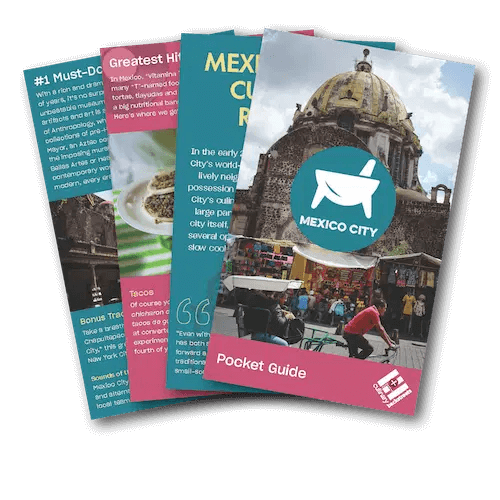
Get Your Free Mexico City Pocket Guide
Introducing our pocket-sized Mexico City guide — perfect for your next culinary adventure. Yours free when you sign up for our newsletter.
Get Your Free Mexico City Pocket Guide
Introducing our pocket-sized Mexico City guide — perfect for your next culinary adventure. Yours free when you sign up for our newsletter.
Immersive Multi-Day Journeys In and Around the World’s Culinary Capitals
Upcoming trips beyond Mexico City
Visual Dispatches from the Frontlines of Local Eating
Mexico City Videos

Discover Culinary Backstreets of Mexico City

No Seats Required

Jamaica Market’s Pop-Up Pan de Muerto Stands

Culinary Backstreets Visits: El Vilsito, Mexico City's "Taco Garage"

Exploring Mexico City, Layer by Layer

Culinary Backstreets Visits Mexico City's Angelopolitano

CB Visits: Mexico City's El Pialadero de Guadalajara

Culinary Backstreets Visits: El Moro in Mexico City

Culinary Backstreets Visits: La Secina in Mexico City

Culinary Backstreets Visits: Tacos Manolo in Mexico City

Culinary Backstreets Visits: Tacos Beto in Mexico City

Culinary Backstreets Visits: Lety in Mexico City's Desierto de los Leones

Culinary Backstreets Visits: Huaraches Rossy in Mexico City's Mercado Jamaica

Mexico City's Most Famous Paella

Culinary Backstreets Visits: Mexico City's El Cuadrilátero for super-sized tortas

A Tour of the Farms of Xochimilco

Live music in Mexico City's Mercado Jamaica

Sullivan Market in Mexico City

Tamales Tere: Back in the Ring

Mezcalina de Toledo HD
Culinary Backstreets® Envoys, Always Searching for the Next Hidden Gem
Meet Our Mexico City Team

Paco
Mexico City Lead Guide

Victor
Tour Leader

Liz
Mexico City Tour Leader

Ignacio (Nacho)
Tour Leader

Ana
Tour Leader

Jacinto
Tour Leader

PJ
Mexico City Photographer

Mario
Tour Leader

Raúl
Food Tour Leader
Your Questions, Answered
There are three areas that are the best places to stay in Mexico City. Centro Histórico is best if it is your first time in the city. Roma and Condesa are trendier areas where you will find parks, restaurants lining the street, galleries and a thriving night life. Polanco is also a nice neighborhood to consider for more high-end accommodation.
There are currently no COVID requirements in place for Americans traveling to Mexico.
Mexico City, the capital of Mexico, is located in the Valley of Mexico (Valle de México), a large valley nestled into the high plateaus in the center of the country, at an altitude of 7,350 ft (2,240 m). The city has 16 subdivisions colloquially known as alcaldías, or boroughs.
Mexico City is the country’s economic and cultural hub, with more than 100 museums and a great deal of art, including massive concerts, the opera and the National Folk Ballet. It has beautiful parks, like Chapultepec, which is twice as big as New York City’s Central Park. The markets are full of life and great food. You may also want to navigate the floating gardens of Xochimilco, a UNESCO World Heritage Site.
Mexico City has a subtropical highland climate due to its tropical location but high elevation.It is generally warm and pleasant during the day, and cools down at night. In fact, the daily temperature range is remarkable, especially in the dry season. In May, the warmest month, this is between 80 and 55 F, and in January, the coolest, the range is 72 to 47 F.
Tacos are king in the Mexico City street food scene, and pastor and suadero are the most popular varieties. Then there are antojitos or snacks/bites, that can be enjoyed at different hours of the day. Look for atole and tamales, gorditas, tlacoyos, pambazos, tortas and quesadillas.
Mexico City has the highest vaccination rate in the country, with about 95% of adults fully vaccinated.
Some of our favorite restaurants in Mexico City include: Quintonil for traditional fare, anything at Azul Histórico, and Barbacoa Renatos for barbacoa. Then there are institutions like Nicos and El Cardenal, which are always a sure bet.
The best time to visit Mexico City is between March and May, even though the streets are pretty crowded this time of year. Your trade-off is beautiful weather, especially considering the city’s winters can be chilly and the summers can be rainy.
Tourism to Mexico City is common and frequent, and it is safe in well-traversed areas, though petty crime can occur – as in most cities around the world. Use additional caution, particularly at night, outside of the frequented tourist areas where police and security patrol more routinely.
You can fly directly to Mexico City from many locations worldwide. Benito Juárez International Airport is Mexico’s main airport hub, and is about 3 miles from Mexico City’s center. Felipe Ángeles International Airport is a second, newer airport serving Mexico City, with only domestic flights at the moment. It is about 30 miles from the center of Mexico City, in Zumpango.
The closest beaches to Mexico City are Acapulco and Veracruz. Both of which are about 4-5 hours by car, and about 6 hours by bus.
Crowds can make navigating the city a bit tricky in busy areas, but in general Mexico City is a great destination for those traveling with kids. The many parks, museums, play areas and tasty treats give children much to experience.




